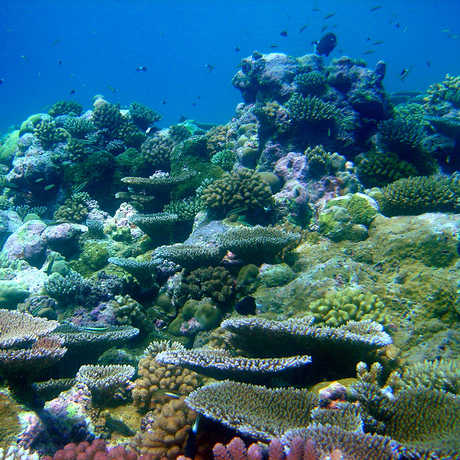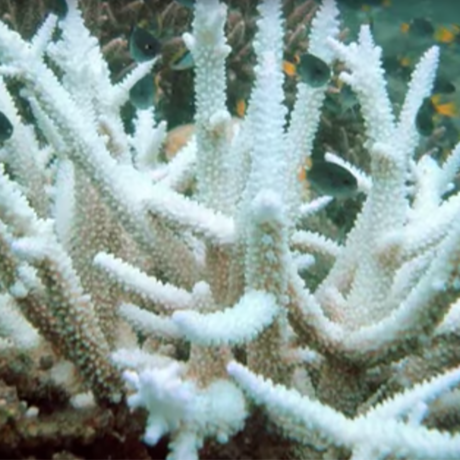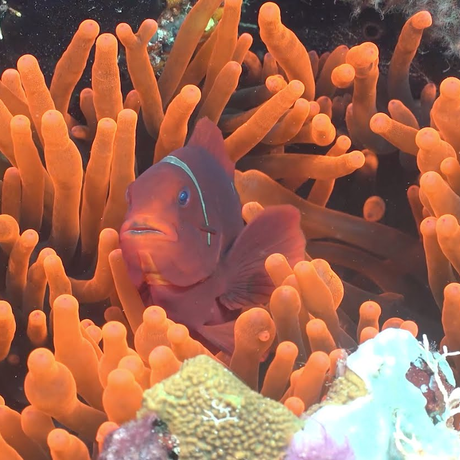Learn the benefit of using videos in the classroom, and browse resources to help you get started.
Corals occupy their own time dimension, but if given enough time, they reveal a surprising array of behaviors that give them an edge deep below the ocean's surface.
About This Video
Grade level: 6-13+
Length: 6.5 minutes
Next Generation Science Standards: MS-LS2.A, MS-LS2.C, MS-LS4.C, HS-LS2.A, HS-LS4.C
Summary
Viewed from the human perspective and in the timeframe of our active daily lives, corals look like little more than underwater landscape—a kind of passive ocean decoration. Most people don’t think of corals as organisms. But they are indeed animals—dynamic colonies of creatures with distinctive, complex, and highly active lives. Among the thousands of known coral species, there’s a tremendous range of diverse behaviors, from locomotion and reproduction to territorial aggression. But because these activities often occur too slowly for us to see in real time—not to mention underwater, where even an observant scuba diver’s time is limited—most have never been documented or studied, especially along the ocean’s deepest reefs. Scientists are now using time-lapse photography to lift the veil on these mysterious creatures, hoping to gain a new level of understanding that will foster greater interest in corals and, by extension, better coral stewardship and conservation.
Video Discussion Questions
- What are corals?
- Why can it be difficult to study corals?
- What tools or instruments do scientists use to try to overcome some of the challenges associated with studying corals?
- Why and how can corals we competitive with each other?
- What is the 'Twilight Zone,' and why do we know very little about it?
- What does it mean for a coral to be 'free-living?' What does this allow the coral to do?
- How do free-living corals deal with the problem of sedimentation in the Twilight Zone?
- How is the physical environment of a shallow coral reef different from that of a deep reef?
- Are shallow reefs and deep reefs connected to each other? If so, how?
- What are some things you were able to see happen in the time lapse videos that you probably wouldn't otherwise be able to see?
Classroom Activities to Accompany This Video:
3-2-1

Have students choose a time lapse sequence from this video and watch it without sound. In their science notebooks, ask students to write down:
- 3 things they noticed or observed
- 2 questions they have or things they wonder about, and
- 1 thing they learned
On the board, draw a table with three columns labeled 'I noticed...', 'I wonder...', and 'I learned...'. Have students discuss their observations, questions, and knowledge gained, and write these things in the appropriate column on the board. In addition to the following questions, you can use the About This Video section to engage your students in a deeper dive into corals in motion:
- What is the purpose of time-lapse video?
- How can time-lapse video be used in research, particularly in coral reef research?
- What coral behaviors can you observe with the time-lapse video that you wouldn't necessarily be able to observe otherwise? Did time-lapse video give you any insight into how some corals are adapted to their environment?
- What other applications of time-lapse video can you think of?
Virtual surveys

Bring your students one step closer to becoming a coral reef researcher with XL Catlin Seaview Survey's coral reef transect data and virtual dives!
- Choose a region of the globe you'd like to explore. Clicking on 'View Details' of that region will take you to a page where you can select a coral reef transect that can be viewed in various image formats, from quadrats to 360 stills. Or completely immerse yourself in a Virtual Survey in places like the Philippines, Belize, and the Galapagos. Your students can collect data and carry out investigations looking at the different species that are present in reefs around the world, just like real coral reef researchers do!
Extension: XL Catlin Seaview Survey Reef Response expeditions have captured some incredible imagery of coral bleaching events in places like New Caledonia, Okinawa, and the Maldives. Your students can conduct an investigation looking at how a bleaching event can impact a reef by analyzing photos before, during, and after an event.
Image credit: NOAA photo library
Video Credits
Produced by Spine Films, this video appears in bioGraphic, a magazine powered by the California Academy of Sciences to showcase both the wonder of nature and the most promising approaches to sustaining life on Earth.
Additional Resources
California Academy of Sciences Video: Pressure in the Twilight Zone
Scientists are using advanced rebreather technology to dive deeply into unexplored areas of the ocean.
Help for Endangered Corals
Read how the California Academy of Sciences is partnering with SECORE, a nonprofit organization developing new technologies and techniques in coral reproduction, to help rehabilitate reefs around the globe.

